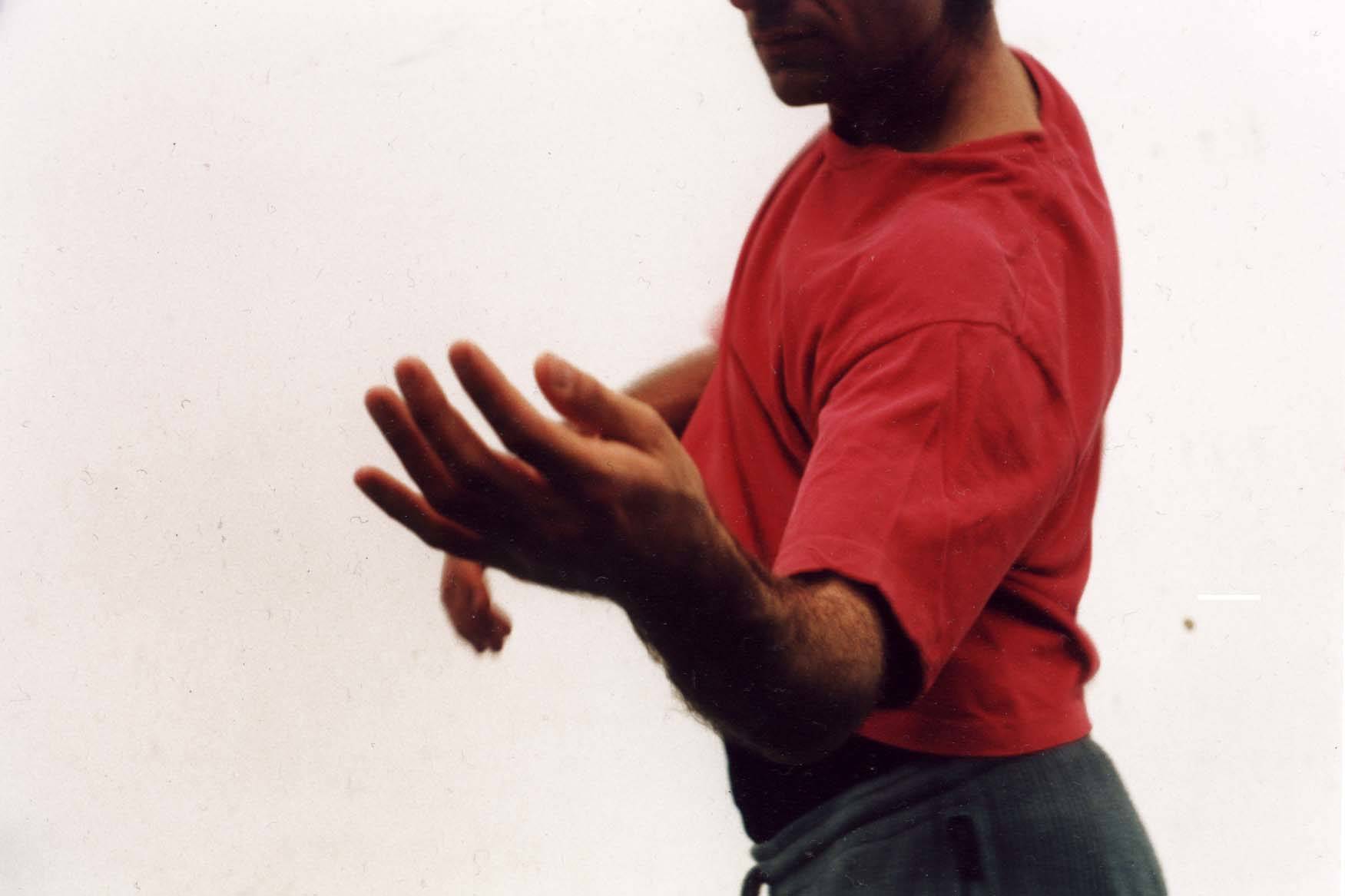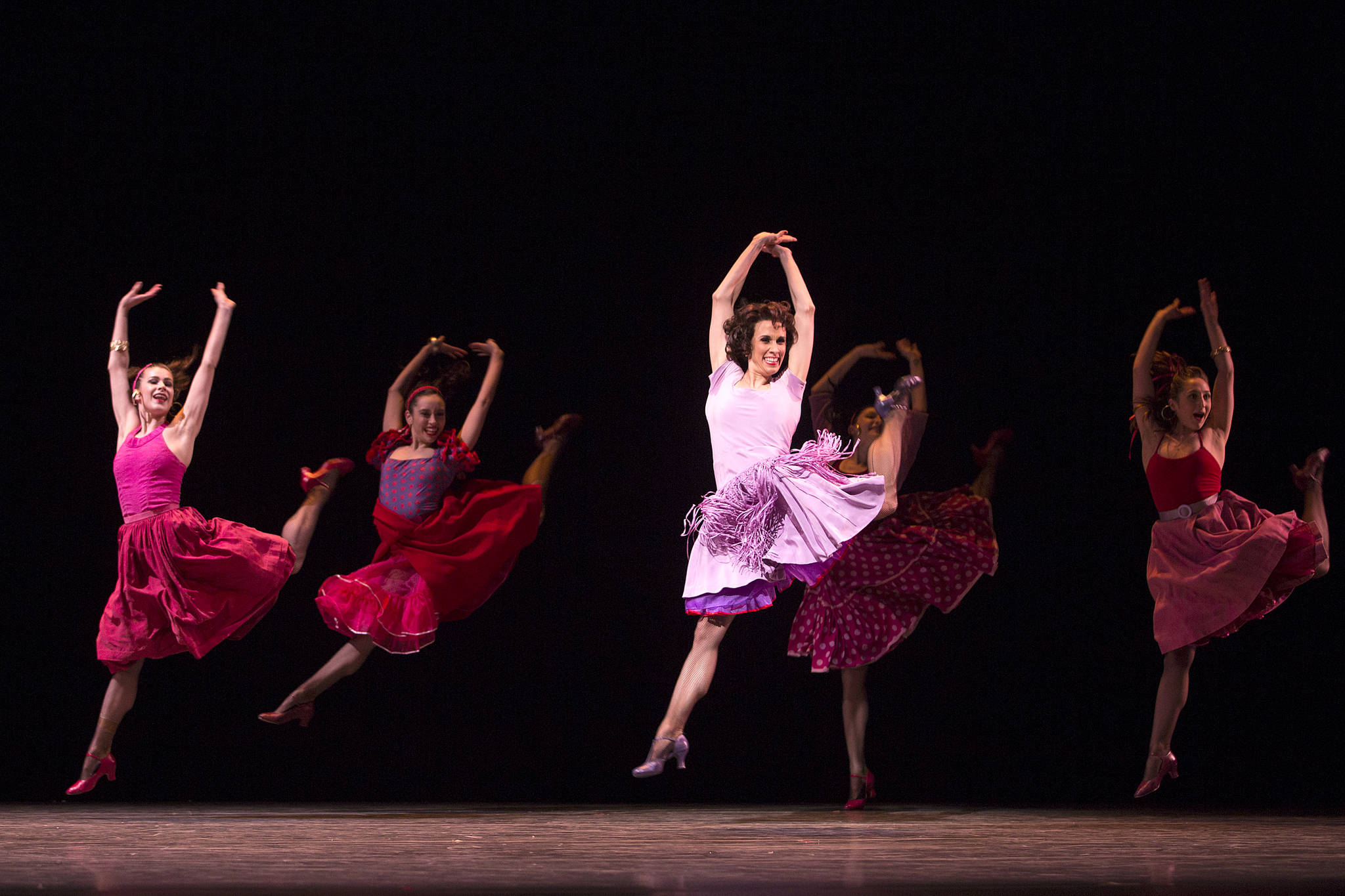Twenty years ago, the producers of Against the Grain/Men in Dance set out to prove that men could dance as powerfully, as evocatively, and as articulately as women. The biannual festival, celebrating its 11th anniversary this year, has more than proved their point, and the programming for its two-week run is jammed with work that illustrates those qualities. Reaching back as far as the 16th century, and following the art form to today, they’ve got a pair of very mixed bills.
The show actually starts before you get into the theater, with dancing on the plaza in front of Broadway Performance Hall. Last weekend featured Joshua Monten’s Kill Your Darlings, a childlike duet for men in mismatched plaid shorts, playing games with sidewalk chalk. They traced their footprints on the brick walkway, rather like the bronze footprints further along Broadway. This postmodern Arthur Murray routine began simply, but became more of a playground competition, finally ending in a flurry of chalk dust.
The action moved indoors for a reconstruction by local early-dance specialist Anna Mansbridge of a 1589 work by dancing master Thoinot Arbeau. Complete with clashing wooden swords and period costumes, this was an example of a time when men had much more freedom as dancers than women did, unencumbered by heavy skirts or corsets.
Despite the producers’ serious mission, several works in the program were fairly lighthearted. Gerard Theoret’s Showmen opened on a group of men in silhouette, getting into costume and warming up to Ravel’s Bolero, but once the voice of the stage manager called for places, the music changed to jazz and the ensemble broke out their flashiest tricks, looking like the backup dancers for a cabaret act. The title of Katheryn Reed’s What Goes Around should be taken literally—the gymnastics duet was performed with a pair of giant hoops. As they rolled and spun them across the stage, the dancers played with physics. Standing inside the hoops, once they picked their feet up off the floor, they were a part of Issac Newton’s world.
Bruce McCormick’s autobiographical solo One Man’s Voice illustrated his peripatetic career, as he described his various jobs around the world in Spanish, French, German, and English. What could have been a cheerful gimmick became much more affecting as he moved through various styles from those travels, ending as he began: “When I was 7 years old, I started dancing.”
While most of the work on the program was designed for adult performers, Michael Garber brought a group of young dancers together in Comradery. In a study of isolation and connection among people, the cast was affecting without being sentimental—a difficult tone to strike.
Both Three Piece by Deborah Wolf and Dylan Ward’s Chimera -or- The Unicorn dealt with the dynamics of a trio; each work examined an individual trying to insinuate himself between a pair. Ward seemed to approach the work from a more dramatic point of view, while Wolf’s compositional skills gave her choreography substantial depth.
Laura Rodriguez took a big risk with the topicality of Aylan Kurdi, an ensemble work dedicated to Syrian children. It’s hard to make art that comments on war without being overwhelmed by reality. While a video with familiar images of bombed-out buildings and dead children, including the 3-year-old Kurd of the title, didn’t really offer a new perspective, the actual dancing had several compelling tableaus, particularly a man with his feet bound by rope, struggling to reach a group across the stage, only to come short time after time. Mike Esperanza’s Backbone also had a serious theme about cooperation, though it didn’t attach itself to a specific narrative. Cleanly crafted and performed, it was a substantial end to the program.
Alongside the live performances was a very touching video tribute to Stanley Perryman, a Seattle native who went on to perform on multiple stages, from concert halls to Broadway. Though he worked with ensembles like the Alvin Ailey company and Dance Theater of Harlem, he was loyal to Seattle, and came back regularly to dance and teach. His death last summer was a loss.
Next weekend’s program includes a few repeats, but will be full of new and new-to-us work. Jim Coleman, familiar to longtime dance audiences from his work with the Bill Evans Dance Company, will appear in multiple guises. Local choreographers Bryon Carr, Anna Connor, Daniel Costa, and Jamie Karlovich are booked, along with out-of-town guests Alex Allen, Gierre Godley, Randy James, and Jason Ohlberg. Broadway Performance Hall, 1625 Broadway Ave., menindance.org. $20–$35. 8 p.m. Fri., Oct. 7; 2 & 8 p.m. Sat., Oct. 8; 5 p.m. Sun., Oct. 9.
dance@seattleweekly.com








